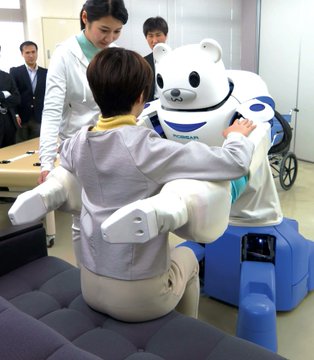
The country wanted robots to help care for the elderly. What happened?
Why haven’t they taken off? The answer tells us something about the limitations of techno-solutionism and the urgent need to rethink our approach to care.
Japan has been developing robots to care for older people for over two decades, with public and private investment accelerating markedly in the 2010s. By 2018, the national government alone had spent well in excess of $300 million funding research and development for such devices. At first glance, the reason for racing to roboticize care may seem obvious. Almost any news article, presentation, or academic paper on the subject is prefaced by an array of anxiety-inducing facts and figures about Japan’s aging population: birth rates are below replacement levels, the population has started to shrink, and though in 2000 there were about four working-age adults for every person over 65, by 2050 the two groups will be near parity. The number of older people requiring care is increasing rapidly, as is the cost of caring for them. At the same time, the already large shortage of care workers is expected to get much worse over the next decade. There’s little doubt that many people in Japan see robots as a way to fill in for these missing workers without paying higher wages or confronting difficult questions about importing cheap immigrant labor, which successive conservative Japanese governments have tried to curtail.
